TFB Review: Sightmark Wraith 4K 4-32×40

Without a doubt, night vision is a fun addition to any shooter’s repertoire. From LARPing in the dark to hunting at night, night vision gives you a superpower, turning the average Joe into a nighttime apex predator capable of seeing in the dark while stalking prey that can’t see you back, hopefully. Night vision devices come in a variety of form factors, from helmet-mounted monoculars, binoculars, and panoramic quad-tubes to weapon-mounted systems intended for use as a clip-on device or a dedicated riflescope. Then there’s digital nightvision versus analogue, and I’ll say up front that the jury is not out on anything. Analogue rules the night. But an inescapable factor that plagues us all, well, most of us anyway, is the cost of seeing in the dark, which can range from very expensive to astronomical. So, when Sightmark asked me to give the Wraith 4K 4-32x40 Digital Riflescope a spin, my first thought, after yes please, was whether this sub-$500 optic brought any value to the table, and if it did, for whom?
First Impressions…
The Sightmark Wraith 4K 4-32x40 ships with a fixed Picatinny mount, an infrared (IR) flashlight, an objective lens cover, and a quick start guide, which I’m sure most of you will skip, making the Wraith’s ease of use a bonus.
While I had seen the specs and was prepared for a chunky 1.35-pound optic, the issue of weight was quickly excused once I handled the Sightmark Wraith 4K and realized the solid aluminum construction and IP55 water resistance features were well worth a few extra upper body reps at the gym to protect those internal electronic components.
The battery compartment holds four AA batteries and features a cover with a hinged thumb screw to secure it to the optic. The cover can be a bit of effort to remove once it is unscrewed, but I noticed that this was due to some substantial weather sealing around the compartment, so I’ll chalk that up to a fair trade.
The Sightmark Wraith 4K 4-32x40 also features a 12 o’clock Picatinny rail for mounting the provided IR light, which is a nice addition. I was thrilled that the IR light wasn’t built into the unit, because my particular rifle setup did not play nicely with the illuminator on top. More on that later.
On the right side of the Wraith 4K is a rubberized weather-sealed cover underneath which you will find a micro SD card slot for recording photos and 4K video, and a USB-C port in case you want to use an external battery to extend the existing 3.6 hour run time on video mode and 4.4 hours on preview mode.
Controls for the Wraith are pretty simple, and I’ll get more into that later. For now, you’ll only need to deal with a five-button arrangement: up, down, right, left, and center. These controls are conveniently located on top of the optic just forward of the diopter dial, making them natural and easy to access without having to take your eye off the prize.
Lastly, the Sightmark Wraith 4K Digital Riflescope comes with a removable soft rubber eyecup, which was comfortable when I used it, and a soft rubber objective lens cover that is tethered to the front of the optic and also easy to remove. The objective lens cover features a peephole cover built into it to restrict light during daytime use, but I didn’t find this necessary and would be more likely to remove it altogether and go with a more traditional flip-up lens cap to avoid any flopping around of the factory cover.
Mount Up!
It took me a moment to decide what rifle I wanted to use as my test platform. I had considered running it on a bolt-action rifle, but realized that the Wraith 4K needed a mount cantilevered to the rear to get the eye relief right. That’s when I decided to throw it on my BCM RECCE 14, which is no stranger to thinning out the predator population out here in the country.
Eye relief on this setup was very accommodating, much of which is due to focusing on an internal digital display rather than a distant object through a series of lenses. Additionally, there is no changing or tightening of the eye relief as you zoom in and out. I found this forgiveness in the eyebox also. It’s important to note that longer sessions behind the Wraith 4K do not induce eye fatigue similar to that of a traditional optic. I’m not entirely up on the science behind this, but I’ll chalk it up to adjustable brightness and the ease of focusing on a display at a set distance.
Menus and Controls…
Optically, the Sightmark Wraith 4K’s diopter adjustment gets you focused with ease on the internal display, while the adjustment ring near the objective lens takes care of focus and parallax at your subject distance. Both work well and rotate smoothly, with just enough tension to keep them where you want.
The remaining controls are located on the 4-way directional pad, with the power button positioned at its center. The buttons themselves do not protrude or offer themselves up to accidental manipulation. Without gloves, it is easy to navigate them by touch, and selections feel secure and deliberate.
When looking through the Wraith 4K, the up and down toggles control the digital zoom, the left toggle selects between daytime and night vision modes, and the right toggle serves as your record button for photos or videos, depending on which is specified in the settings. Power doubles as a menu and confirm button, taking you to a settings screen with simple controls for brightness, reticle color and selection, zeroing, playback, settings, and weapon profiles. The menus are neither lengthy nor convoluted, like those of some digital cameras, but offer quick access and easy navigation. It shouldn’t take you more than five minutes to familiarize yourself with them entirely and get started.
The Sightmark Wraith 4K features ten different reticle patterns that can be set to nine different colors to suit the shooter’s preference. While subtensions lack markings or clear instructions as to which zoom level they are accurate, the ability to load zeroes for various distances in the profile menu can help keep your point-of-aim point-of-impact relatively predictable based on your crosshairs. Otherwise, know your drops.
Zeroing
Zeroing the Sightmark Wraith 4K is quick and clever, with the ability to save multiple profiles. If you plan to swap out the Wraith’s mount with a return-to-zero option like you can find at American Defense Manufacturing (ADM), this feature helps store profiles for multiple platforms. Additionally, profiles could be used to set independent zeroes for ammunition type or even at varying distances, as mentioned earlier. Pretty neat. Setting the zero can also be extremely easy. Find a stable platform to shoot from. I shot off my K700 AMT Aluminum Tripod with Reaper Grip, which was provided to my Kopfjäger.
Fire a 3-shot group, and find the center of that group. Using the Wraith’s menu, navigate to the “Reticle Zero” function under the “Reticle Settings” tab and place your aiming point at the center portion of the shot group. Use the directional pad to move the reticle’s aiming point to your bullseye and press the center button to confirm. This will automatically readjust the entire reticle. Take a few shots now to validate your selection and repeat the process if you choose to make any fine adjustments, and that’s the ball game. This took me about five minutes.
How Tough Is the Sightmark Wraith 4K?
I didn’t bury the Wraith 4K in the mud, throw it in the lake, set it on fire, or drop it from a rooftop. Durability testing for me involved daily use for approximately two months, in and out of the truck on some rough rides through uneven ranch pastures, general LARPing bumps and follies, generous hand strikes, intentional banging on a wooden bench to see if the Wraith holds zero, and a fair amount of use during stormy wet weather.
I’ll sum this up by saying that the Sightmark Wraith 4K was pleasantly boring, holding zero from the moment I set it through the end of my testing. The optic did not mind getting wet either, and the heavy-duty aluminum construction and IP55 water resistance I mentioned earlier proved to be more than just hopeful marketing language.
While the Wraith 4K is recoil rated up to .308 Winchester, I ran approximately 700 rounds of 5.56x45mm NATO through it for my review, shooting through the optic and engaging closer targets more rapidly through a Sightmark MTS Mini Solar Red Dot, which I mounted on top of the Wraith. I did not experience any performance or reliability issues throughout my review, and I have no doubt the same would be true for use on a .308 platform.
Daytime…
The Sightmark Wraith 4K Digital Riflescope works very well as a daytime optic once you get used to the idea of looking at what is essentially a miniature flat-screen television. The image on the 1280x720 display is impressively clear for a digital optic, with natural color reproduction and a refresh rate that produces smooth imaging, whether you’re scanning an area or watching a subject on the move. Note that while the internal display features a 1280x720 resolution, the actual video output recorded on the memory card is in 4K.
Thanks to Wraith 4K’s digital brightness settings, daytime scenarios under any lighting condition, from direct sun to heavily overcast, did not challenge usability at all. I also tested the digital zoom range, finding magnification up to 20x remarkably resistant to pixelization and aliasing, something I did not expect from a digital optic at this price point. Additionally, magnification of up to 32x, where these issues become noticeable, remains entirely usable.
Zero Dark Hunting…
Let's be honest. This is what you’re here for, and a significant factor by which we’re going to decide whether or not this sub-$500 optic puts value on the table and for whom.
Looking through the Sightmark Wraith 4K 4-32×40 at night is not like looking through analogue Gen 3 white phosphorus night vision. If there’s a streetlight, heavy moonlight on an open space, or any additional light in the area you are viewing, then you’re good to go. If it is really dark out there, however, then the use of an IR illuminator is necessary. This challenges the Wraith 4K’s effectiveness as a tactical device, as heavy use of an IR illuminator would be like announcing yourself with a megaphone to anyone in the area also using night vision.
As a hunting device or for some nighttime recreation, however, the Sightmark Wraith 4K 4-32×40 is highly effective, and at just under $500, the value is undeniable. Using the included IR illuminator with its adjustable focus beam, I was able to identify targets with confidence out to between 200 and 300 yards, and I’m sure a more powerful illuminator could extend that range.
Mother/Calf pair at approximately 275 yards with IR illuminator at 4x magnification.
Mother/Calf pair at approximately 275 yards with IR illuminator at 12x magnification.
Mother at approximately 275 yards with IR illuminator at 24x magnification.
Mother at approximately 275 yards with IR illuminator at 32x magnification.
Group of nearby cows, approximately 50 yards away.
Remember when I said earlier that the IR illuminator didn’t play well on my setup while mounted to the top of the Wraith 4K? The reason is that I have an IR device already mounted at 12 o’clock on my handguard, and while the optic clears that device even at 4x magnification, turning the illuminator on while mounted on top of the Wraith causes the IR light to reflect into the optic, obscuring the view.
To fix this issue without removing my laser and having to re-zero it, I simply moved the illuminator to the right side of my handguard near the muzzle. Of course, it starts to look like one of those “too many attachments” gun memes with a Surefire Scout Light mounted on the opposite side, but for this review, this was a perfect solution. Additionally, this allowed me to mount the Sightmark MTS Mini Solar Red Dot on top of the Wraith 4K, as I mentioned earlier, providing a quick targeting solution for fast, close-up shots.
Final Thoughts…
I found value in the Sightmark Wraith 4K 4-32x40 for day and night hunting and just plain fun. For under $500, I got the impression that the optic was built to last and take the type of abuse one might expect out in the field, especially while predator hunting at night. The weather seals performed well in light to moderate rain conditions, and I encountered no issues with zero retention or malfunctions of any type.
Overall, I recommend the Sightmark Wraith 4K 4-32x40 to anyone looking for an optic that facilitates both day and nighttime hunting on a budget. It is also a lot of fun to shoot with on the range. If hunting nocturnal predators isn’t your cup of tea, then a traditional optic is likely the best route for strictly daytime use. But if you’re looking for dependability and versatility without a payment plan, and you understand the limitations of digital nightvision, then Sightmark hit this one out of the park.
For more information on Sightmark and their entire line of optics and accessories, please visit: sightmark.com.

2A enthusiast. If it shoots, I get behind it, from cameras to firearms. | DTOE = Darwin's Theory on Everything | Instagram, YouTube, X: @dtoe_official
More by Darwin N.
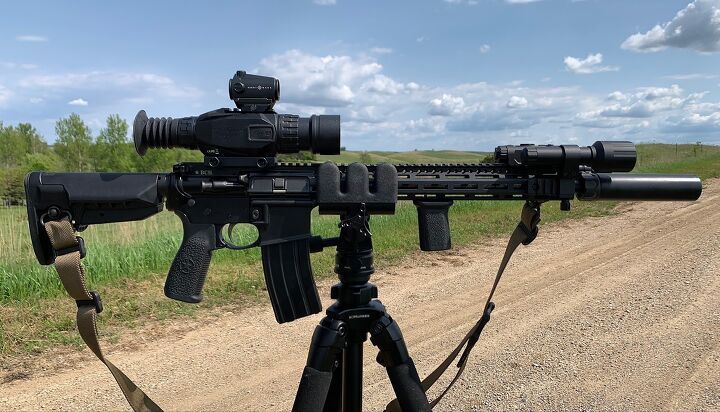




























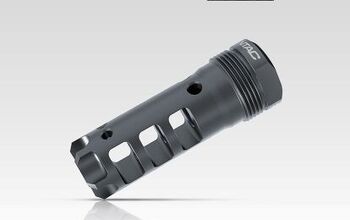

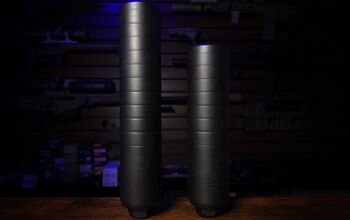
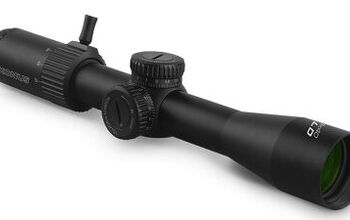


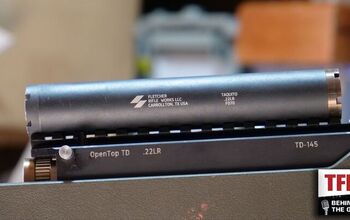




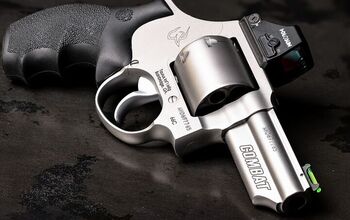



Comments
Join the conversation
For ten years I've had an IR scope mounted on a rifle that I keep handy for evening coyote control. What a POS. Basically, you need an outside light source to illuminate the target area because the IR illuminator on the scope is too weak for the job (or maybe the Russian internal parts are garbage).
At a price point that's actually possible!! Definitely makes me want to want one although I'd prefer a thermal scope and night vision for helmet mounts. NV for getting in and out and thermal for the shooting. I'm a bit torn on this.